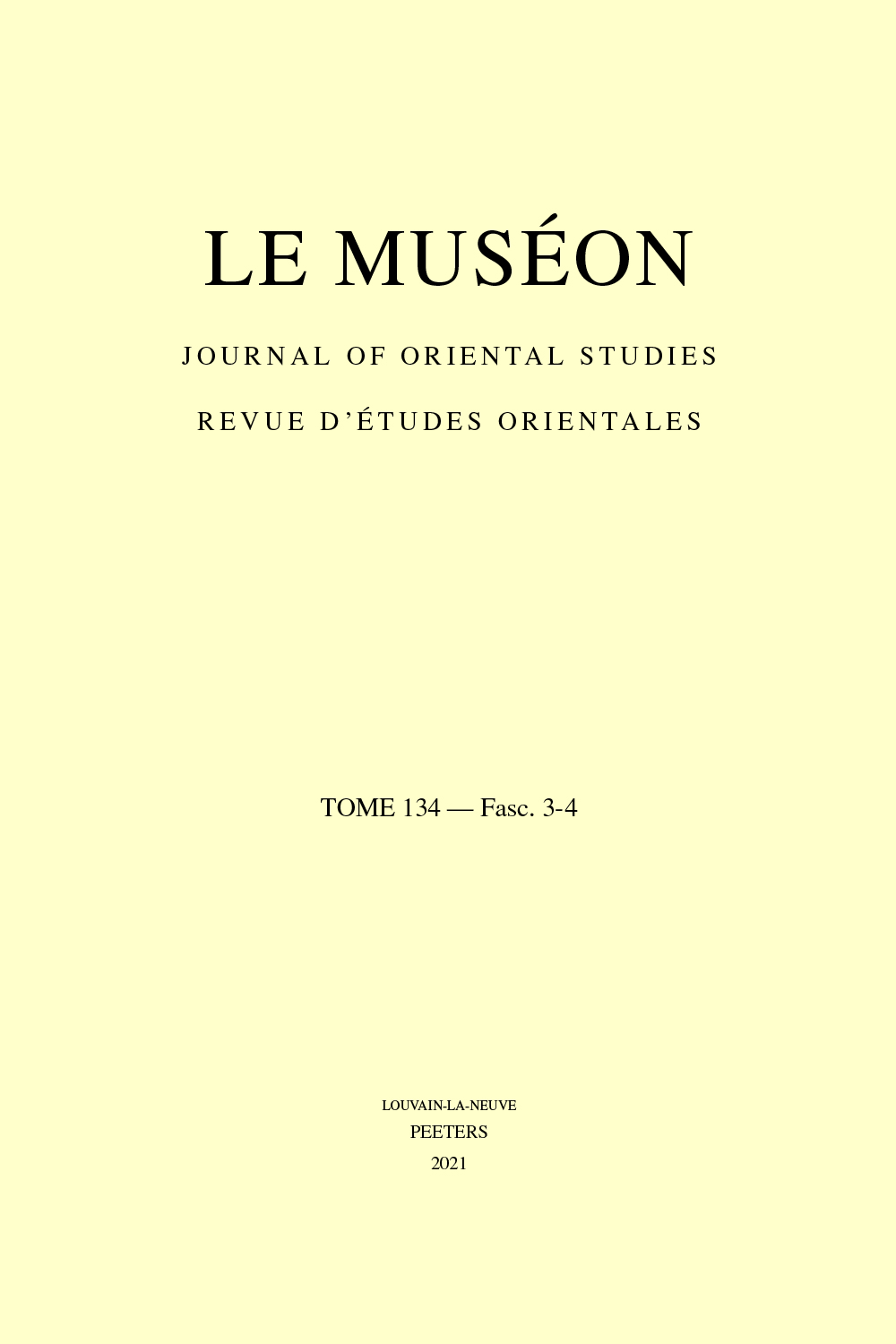 previous article in this issue previous article in this issue | next article in this issue  |

Preview first page |
Document Details : Title: The Inscribed Metal Ring in the Monastery of the Holy Cross in Jerusalem Author(s): SKHIRTLADZE, Zaza , TCHEKHANOVETS, Yana Journal: Le Muséon Volume: 138 Issue: 1-2 Date: 2025 Pages: 197-226 DOI: 10.2143/MUS.138.1.3294403 Abstract : A metal ring engraved with a Georgian a asomtavruli inscription was inserted into the mosaic pavement of the catholicon of the Monastery of the Holy Cross in Jerusalem by the Hegoumenos Nikiphore Choloq’ashvili during the renovations he instigated in the 1640s. The content of the text engraved on the ring is based on a passage from Paul’s Epistle to the Thessalonians (II Thess. 2:15), and is imbued with the universal Christian spirit, which gains particular intensity in the monastic context. Placed in the center of the church, under the dome, the ring was conceived as one of the principal artistic and textual highlights of the church interior. It was conceived as the imaginary axis connecting heaven and earth, which is perceived as identical to the commonly recognized notion of the axis of the world. This concept is held to be true for the Monastery of the Holy Cross and its catholicon, since according to legend the Monastery stands upon the site where the tree that gave its wood to the Calvary Cross grew. At the same time, the inscription echoes the political, ethnocultural and confessional realities under which the Georgian monastic community of Jerusalem was active for centuries. The inscription on the metal ring was a significant part of the historical narrative provided by the church’s epigraphy and paintings. A major component was a vast gallery with prominent Georgian historical figures, both secular and religious, who played a role in the founding and subsequent renovations of the Monastery. This group of historical figures was a witness to the legal rights that the Georgians had to the sacral places in the Holy Land, especially to the Monastery of the Holy Cross. |
|


